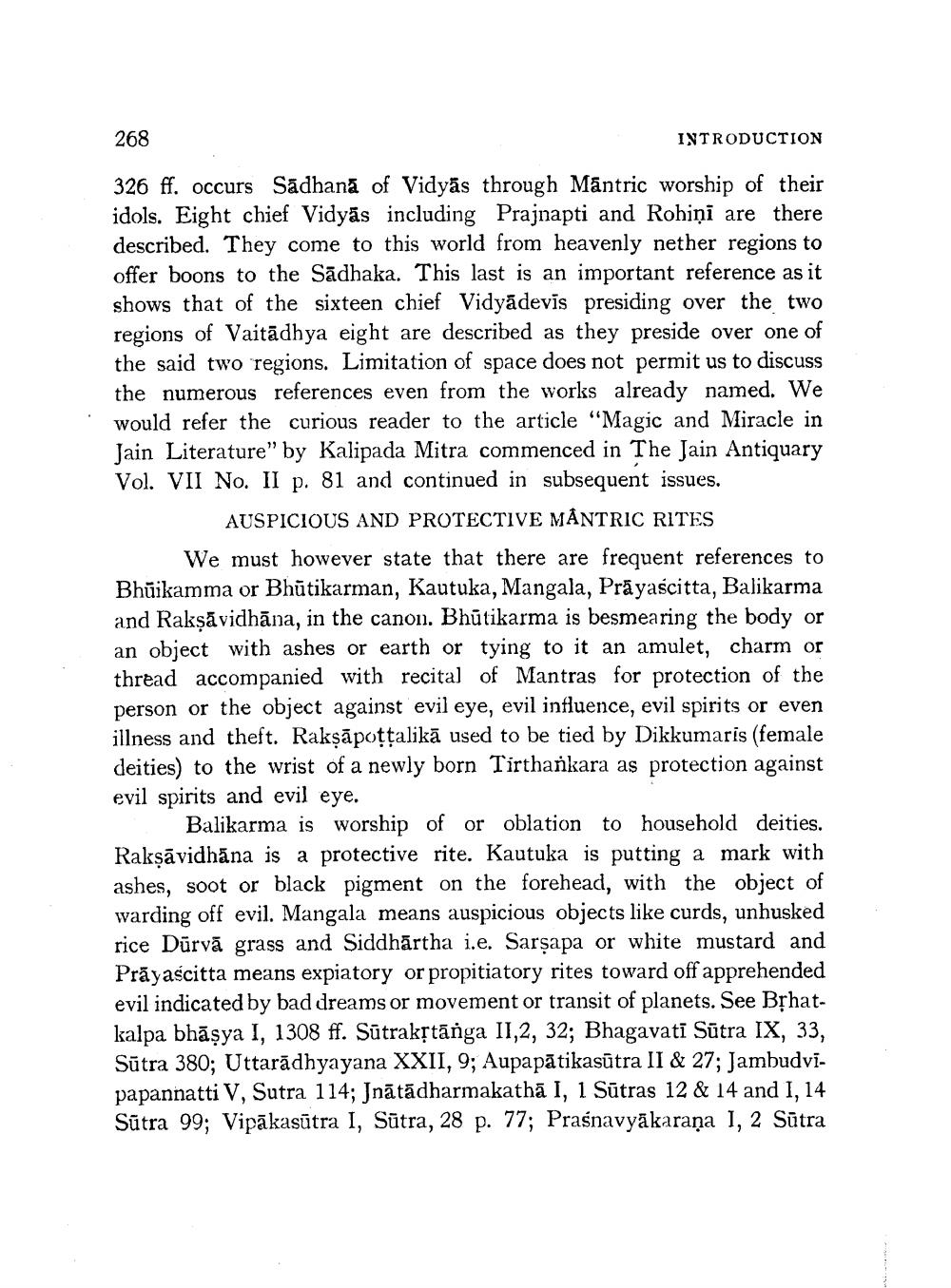________________
268
326 ff. occurs Sadhana of Vidyas through Mantric worship of their idols. Eight chief Vidyas including Prajnapti and Rohini are there described. They come to this world from heavenly nether regions to offer boons to the Sadhaka. This last is an important reference as it shows that of the sixteen chief Vidyādevis presiding over the two regions of Vaitādhya eight are described as they preside over one of the said two regions. Limitation of space does not permit us to discuss the numerous references even from the works already named. We would refer the curious reader to the article "Magic and Miracle in Jain Literature" by Kalipada Mitra commenced in The Jain Antiquary Vol. VII No. II p. 81 and continued in subsequent issues.
AUSPICIOUS AND PROTECTIVE MANTRIC RITES
INTRODUCTION
We must however state that there are frequent references to Bhuikamma or Bhutikarman, Kautuka, Mangala, Prayaścitta, Balikarma and Rakṣāvidhāna, in the canon. Bhūtikarma is besmearing the body or an object with ashes or earth or tying to it an amulet, charm or thread accompanied with recital of Mantras for protection of the person or the object against evil eye, evil influence, evil spirits or even illness and theft. Rakṣāpoṭṭalikā used to be tied by Dikkumaris (female deities) to the wrist of a newly born Tirthankara as protection against evil spirits and evil eye.
Balikarma is worship of or oblation to household deities. Rakṣāvidhāna is a protective rite. Kautuka is putting a mark with ashes, soot or black pigment on the forehead, with the object of warding off evil. Mangala means auspicious objects like curds, unhusked rice Durvā grass and Siddhartha i.e. Sarṣapa or white mustard and Prayascitta means expiatory or propitiatory rites toward off apprehended evil indicated by bad dreams or movement or transit of planets. See Bṛhatkalpa bhāṣya I, 1308 ff. Sūtrakṛtānga II,2, 32; Bhagavati Sūtra IX, 33, Sūtra 380; Uttaradhyayana XXII, 9; Aupapātikasūtra II & 27; Jambudvipapannatti V, Sutra 114; Jnātādharmakathā I, 1 Sūtras 12 & 14 and I, 14 Sūtra 99; Vipākasūtra I, Sūtra, 28 p. 77; Praśnavyākaraṇa 1, 2 Sūtra




